Last-Minute NYC Holiday Gift Guide 🎁
We’ve created a holiday gift guide with presents for the intrepid New Yorker that should arrive just in time—


Latin America’s most cosmopolitan city is a magnet for urban artists and art lovers from across the globe. Here in Buenos Aires graffiti art is not a clandestine activity, but a celebrated art form that turns talented graffiti artists into celebrities. Colourful, larger-than-life murals are painted freely on busy city streets, often with the approval of local porteños and money from the government. Found in barrios across the city, street art works range from small stencil images to grandiose displays of world-class artistic talent representing Argentina’s vibrant social and political culture.
The massive metropolis offers artists plenty of space for painting outdoors. Here it isn’t hard to find empty walls on high rises, garage doors or abandoned factories. Like Rio de Janeiro, where graffiti is legal, Buenos Aires has few regulations around graffiti art. Most of the time, all the artist needs is permission from the building owner. In many cases, artists are sought out by building owners who’d like to add something interesting to their bare walls.
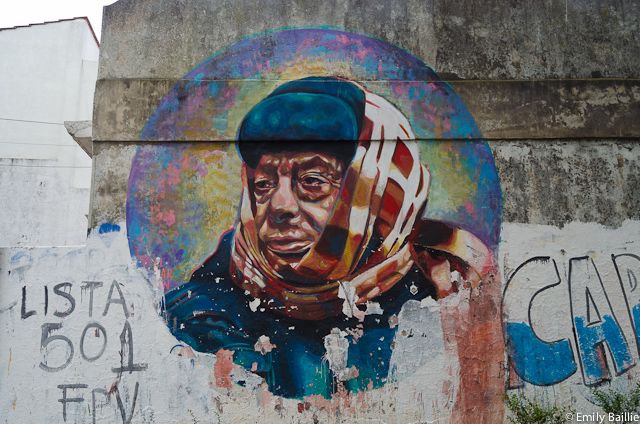
In a city where the arts are as celebrated as tango and wine, porteños are favourable toward street art as a means of beautifying their city. Argentine street artist Martin Ron explains, “we have a lot of freedom to paint and the acceptance of the public means that street art is not perceived as vandalism as in some countries.”
While there is still crude graffiti around the city that boasts of sexual conquests and football victories, much of the artwork in Buenos Aires has a deeper significance. In the city’s Villa Urquiza neighbourhood, a giant baby painted by Italian street artist Blu is invaded by exploitation and corruption of human beings. Another of Blu’s murals features hundreds of figures with their eyes covered by a blindfold in the colors of the Argentine national flag, obediently following a dark figure who stands above them wearing a presidential sash and a suit and tie.
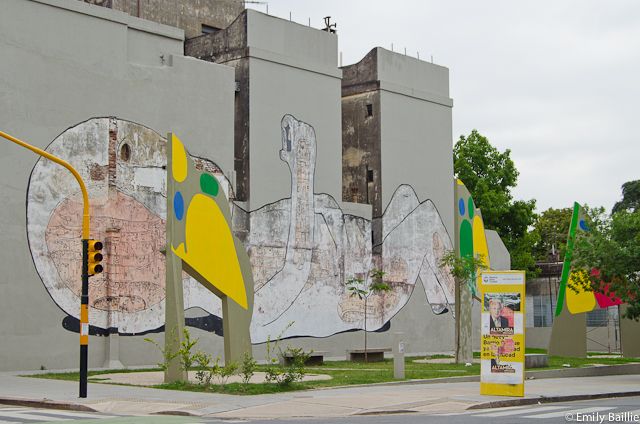
Mural by Blu
In Villa Urquiza, Argentine artist Martin Ron created a 412 square metre surrealist painting called El cuento de los loros, the largest mural in the city. The piece took 16 days, a crane and the help of four other painters to complete. The government contributed the crane and 62 litres of paint.
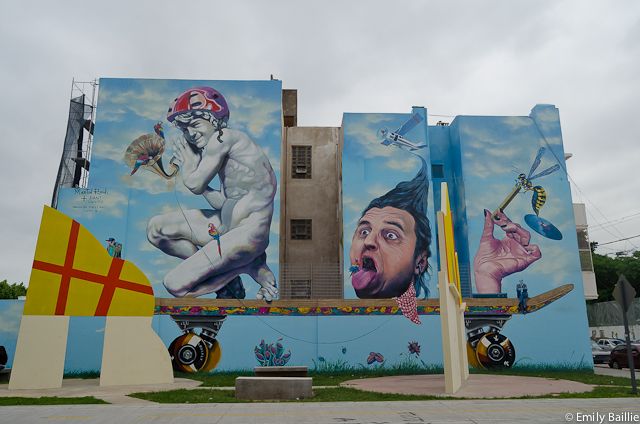
Mural by Martin Ron
Buenos Aires’ top murals are created by both local and international artists, many of whom are art school grads trained in painting, sculpture, drawing and design. Graffiti writer-turned-muralist Jaz (Franco Fasoli) hails from Buenos Aires, along with surrealist muralist Martin Ron, both of whom are now painting and leading international gallery shows in cities like London and Berlin. Other top artists such as Blu from Italy are coming to Buenos Aires to leave their mark in one of the world’s most creative cities. Though its is reported that renowned street artist Banksy has not yet painted in Buenos Aires, the city is home to dozens of replicas of his infamous stencils.
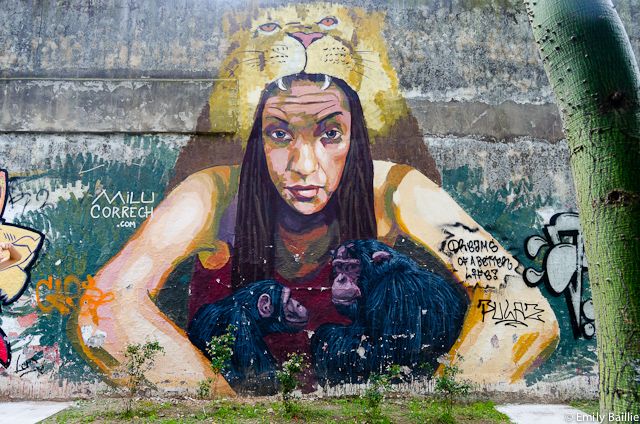
The vibrant street art scene in Buenos Aires grew largely from the 2001 financial crisis in Argentina. Amid widespread unemployment, riots, frustration and collapse of government, the city saw rise in politically charged urban art. Law enforcement around graffiti was largely absent, as more pressing social problems occupied their attention. More murals began to spring up in trendy Palermo, residential Villa Urquiza, bohemian San Telmo and working class-turned-touristy La Boca.
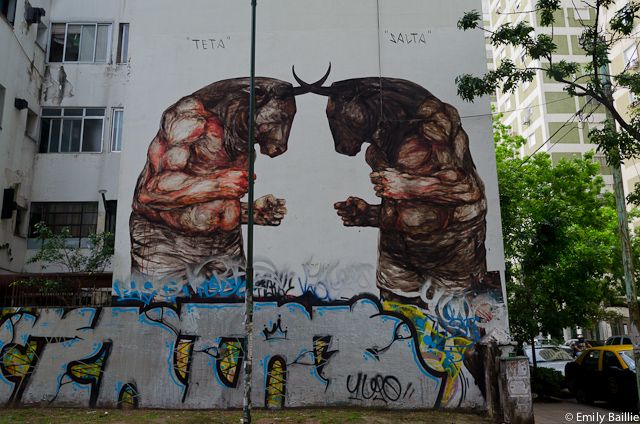
Since then, street art has increasingly captured the imagination of locals and tourists. Street art tours offered by Graffitimundo and BA Street Art have become well-known, and several galleries devoted to street art selling screen prints have popped up. BA Street Art recently joined the Google Street Art Project as one of its 30 global partners helping to document street art and graffiti around the world in an online digital photo library.
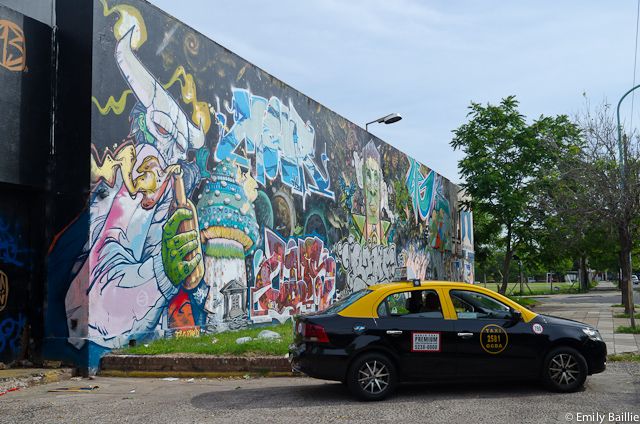
As street art continues to grow in acceptance and popularity around the globe, the streets of Buenos Aires are a world-class open air art gallery that has become a must-see for anyone visiting Argentina.
Follow the author on Twitter @EmilyBaillie.
Subscribe to our newsletter